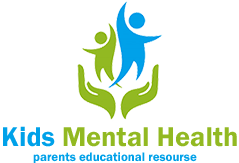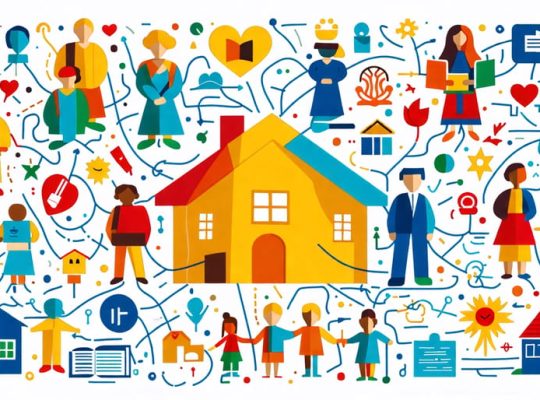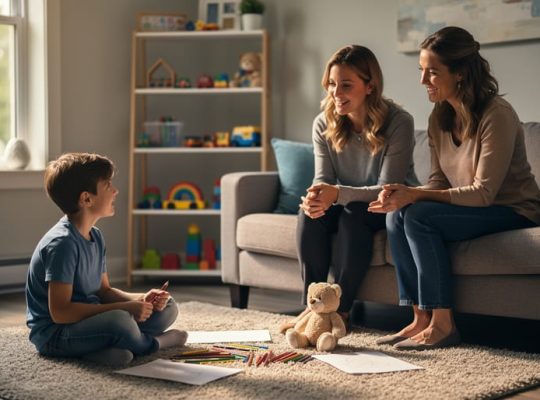Identify and address communication patterns within the family that hinder understanding. Encourage open dialogue where each member feels heard and respected, fostering a supportive environment for children. Emphasize the importance of setting and maintaining healthy boundaries, helping family members respect personal space and individuality. Integrate consistent family meetings where everyone can voice concerns and collaboratively find solutions, reinforcing the family’s resilience. Utilize the expertise of a family therapist to guide these efforts, ensuring that emotional and psychological needs are met with professional support, leading to enhanced family dynamics and improved mental health for children.
Understanding Family Therapy
What Is Family Therapy?
Family therapy is a compassionate and supportive approach to enhancing family dynamics through structured sessions guided by a trained therapist. It focuses on understanding and improving communication, relationships, and emotional health within the family unit. The main goal is to create a safe space where families can discuss challenges openly, explore feelings, and collaborate to resolve conflicts. This type of therapy addresses a variety of issues such as parenting struggles, behavioral concerns, and mental health challenges. By engaging in family therapy, parents, children, and caregivers can build healthier, more supportive environments that foster growth and understanding, benefiting everyone involved.

Different Approaches in Family Therapy
Family therapy offers a range of approaches tailored to meet diverse family needs. Structural therapy focuses on adjusting family roles and interactions, helping families establish healthier boundaries. For those dealing with conflict, narrative therapy encourages family members to share their personal stories, fostering understanding and empathy. Cognitive-behavioral therapy (CBT) is effective in altering negative thought patterns within family dynamics. Meanwhile, solution-focused therapy emphasizes setting and achieving family goals through small, positive steps. An expert in family therapy once shared how a blended family found harmony by using these methods to navigate complex relationships. These approaches highlight how family therapy can nurture healthier relationships and support children’s mental health.

Benefits of Family Therapy for Children
Enhancing Communication
Family therapy plays a vital role in enhancing communication within families. It creates a safe space where everyone can share their feelings openly, fostering understanding and empathy. Through expert guidance, families learn to express themselves in ways that others can hear and appreciate. Picture a mother, once frustrated by her teenager’s silent treatments, now sharing meaningful conversations with her child—this transformation is powerful and heartening. Therapists teach practical communication skills, helping families break down barriers and build stronger connections. Such positive changes not only improve everyday interactions but also create lasting relationships marked by love and mutual respect.

Fostering Emotional Support
Family therapy creates a safe space where children feel heard and understood. This supportive environment encourages them to express thoughts and feelings they might otherwise suppress. By involving the whole family, therapy highlights each member’s role in a child’s emotional world. Parents can learn effective ways to communicate, while siblings understand how their interactions impact one another. For children, knowing their family is a partner in their emotional journey can be incredibly reassuring. As one expert shared, “When a child sees that their family cares to understand and support them, it builds trust and strengthens emotional bonds.”
Addressing Behavioral Issues
Family therapy plays a vital role in addressing children’s behavioral issues by providing a safe space where families can understand the underlying causes of these behaviors. Imagine a scenario where a child exhibits frequent outbursts or withdrawal. Family therapy helps parents and children communicate more effectively, fostering empathy and a shared understanding. Through guided sessions, therapists can address issues that might contribute to behavioral challenges, such as stress or poor communication. By taking part in therapy, families often discover new strategies to improve interactions at home. They might also learn to nurture a healthy relationship with food, boosting overall family well-being.
Building Resilience and Coping Skills
Family therapy offers children a safe space to express their feelings, teaching them valuable skills crucial for personal growth. Through guided sessions, children learn to openly communicate, fostering an environment where they feel heard and valued. This process naturally enhances their resilience by promoting problem-solving skills and helping them manage stress more effectively. By addressing challenges collectively, families create a network of support, ensuring children are not alone in facing life’s obstacles. This nurturing setting is vital for building resilience and reinforcing coping mechanisms, empowering children to thrive even in challenging situations.
Expert Insights on Family Therapy
Family therapy has become an essential tool in promoting mental health within households, particularly for children. Experts consistently highlight its efficacy in fostering healthier family dynamics and enhancing communication. Dr. Emily Rodriguez, a renowned child psychologist, emphasizes that family therapy provides a safe space for all members to express their feelings. “It helps families recognize patterns that might contribute to conflict or stress and work collectively towards solutions,” she explains.
Research further supports the effectiveness of family therapy, showing positive outcomes in reducing symptoms of anxiety, depression, and behavioral issues among children. A comprehensive study conducted at the Child and Family Institute found that families who participated in therapy reported significant improvements in their relationships and children’s psychological well-being, as opposed to those who didn’t.
Practitioners often share powerful anecdotes about breakthroughs in therapy sessions. One therapist recalls a family struggling with a child’s school refusal. Through therapy, they uncovered underlying issues relating to the child’s fear of academic failure and social anxiety. As these issues were addressed, the child gradually regained confidence, leading to improved attendance and school performance.
The collaborative nature of family therapy is also highly praised by experts. According to Dr. Sarah Nguyen, integrating family members in the therapeutic process enables individuals to understand each other’s perspectives better, reducing misunderstandings. “When families learn how to communicate effectively and empathetically, it often leads to more supportive environments for children,” she notes.
For parents, teachers, and healthcare professionals, the insights from experts highlight the transformative potential of family therapy. Understanding its role in nurturing a supportive family environment can be vital in addressing children’s mental health needs. By embracing this collaborative approach, families can build stronger, more resilient connections that benefit every member, particularly the young ones.
Personal Stories of Family Therapy Success
When Jane and her family first started family therapy, they were desperate for a change. The constant arguments and misunderstandings were affecting everyone, especially their teenage daughter, Emily, who was struggling with anxiety. Jane shares how they discovered family therapy as one of the most effective treatments for their situation. Their therapist provided them with a safe space where each family member could express their thoughts and feelings without fear of judgment. Through open communication and guided exercises, they learned new ways to listen and respond to each other. Over time, Emily’s anxiety improved, and the bond among family members grew stronger.
Similarly, the Reed family experienced significant changes through family therapy. Struggling with their son Alex’s behavioral challenges at school, they felt overwhelmed and isolated. They turned to family therapy, hoping for guidance and support. With the guidance of their therapist, they identified new strategies to manage these challenges. The therapist helped them focus on enhancing their problem-solving skills, increasing their understanding of each other’s perspectives, and reinforcing positive behavior in Alex. The once-frequent tension in their household gradually transformed into a more peaceful and cooperative environment.
Then there’s the story of the Johnsons, who sought family therapy after a major life change shook their family dynamic. After relocating to a new city, their young children were struggling to adjust, leading to frequent meltdowns and conflicts. In therapy, they worked on building resilience and coping skills as a family. They learned the importance of maintaining routines and how to support each other’s emotional needs during transitions. As a result, their children became more adaptable, and the family learned to thrive amid change.
These personal stories highlight the transformative potential of family therapy. It is not just about fixing problems but enhancing relationships and creating lasting positive change. Families like Jane’s, the Reeds, and the Johnsons experienced firsthand how therapy can open doors to understanding, communication, and healing. By facing challenges together and with expert guidance, they built stronger, more supportive family units. For those wondering if family therapy could be right for their family, these stories serve as a testament to its powerful impact on children’s mental health and overall family well-being.
Conclusion: Embracing Family Therapy for Healthier Families
Family therapy offers a compassionate and effective approach for improving mental well-being within families, making it an invaluable resource for those looking to nurture healthier dynamics. By providing a safe space where members can express their feelings and learn to understand one another better, family therapy helps to address underlying issues and promote stronger bonds. Parents, teachers, and healthcare professionals can especially benefit by considering this collaborative method, which is tailored to meet each family’s unique needs. Hearing stories of transformation, like the Smith family’s journey from conflict to understanding, emphasizes the tangible benefits of therapeutic intervention. Supported by expert insights from therapists, family therapy not only addresses immediate concerns but also equips families with lasting communication skills. Embracing this approach can pave the way for more loving and supportive family environments, ultimately contributing to better mental health for everyone involved.







